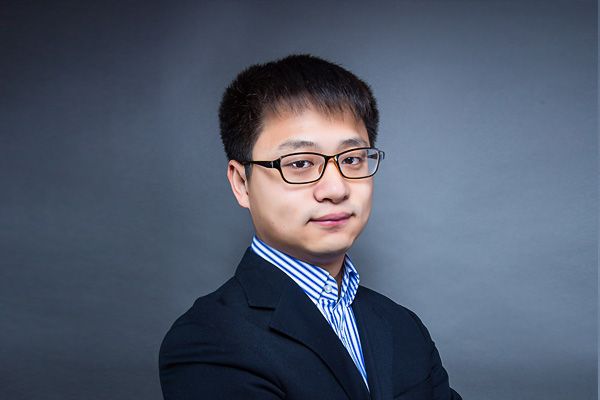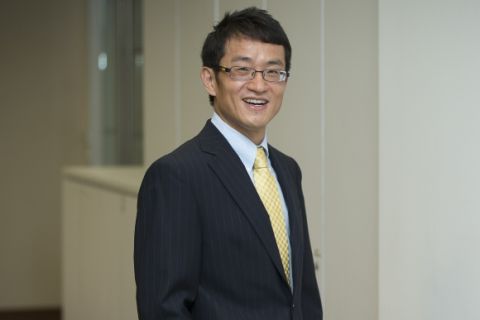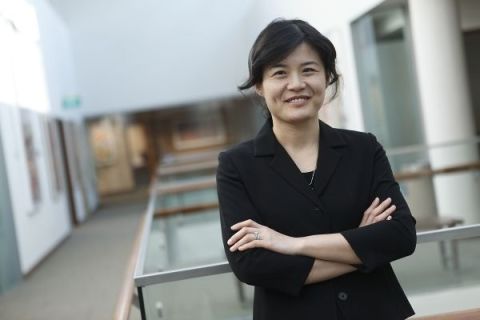
By Vince Chong
SMU Office of Research – In the past two decades, technological leaps in urban infrastructure have driven an explosion of convenience and industry in services such as ride-hailing and delivery of goods.
And recently, for the first time in its nascent history, academics from around the world have formalised the collective concept of transportation-enabled services, or TRENS, in a research paper aimed at catalysing further study into the burgeoning field.
One of the authors, Singapore Management University’s Associate Professor of Information Systems Wang Hai, tells the Office of Research that TRENS “brought big value to society, and will continue to do so.”
“Transportation is a crucial aspect of daily life. It is so much more these days in terms of passenger mobility, information collection, bringing together various types of services from food delivery to ride-hailing, and healthcare such as mobile vaccination centres,” he says.
“The potential is immense.”
After earning a doctorate in operations research at the Massachusetts Institute of Technology in the United States, that is, using mathematics to solve management and engineering problems, Professor Wang delved deep into transportation data research as it gives him a creative outlet for pursuing novel ideas that benefit society via big data and artificial intelligence.
His coauthors of Transportation-Enabled Services: Concept, Framework, and Research Opportunities comprise Professor Niels Agatz, Rotterdam School of Management, Erasmus University; Professor Soo-Haeng Cho, Tepper School of Business, Carnegie Mellon University; and Professor Hao Sun, College of Management, Shenzhen University.
The paper sets out a general framework to highlight relationships between stakeholders comprising TRENS providers, which would be companies such as Uber, Singapore-founded Grab or China’s Meituan shopping platform; transportation, including vehicles and drivers; and service suppliers.
“The central idea revolves around leveraging transportation systems to enhance and extend the reach of non-transportation services and thus foster synergies and efficiencies,” the research states.
“In the foreseeable future, the trend of rapid urbanisation triggers demand for even more services, accompanied by conflicting claims on urban space. The dynamic urban environment, marked by ongoing construction, shifting demographics, and evolving service demands and preferences, will continue to influence the evolution of [TRENS].”
Smart phones and robot cars
TRENS arguably kicked off with the advent of smart phones in the 2000s, Professor Wang points out.
“That laid the foundation for modern TRENS. For the first time, we had something that provided real-time information to provide locational-related services and measure demand,” he tells the Office of Research.
This led to the emergence in the mid-2010s of now-ubiquitous services such as ride-hailing and goods delivery, including food.
And in Professor Wang’s calculated opinion, the next big TRENS trend is autonomous vehicles (AVs), which include drones and driverless cars that provide services like ferrying passengers or mobile healthcare. Robot taxis, for example, have been plying the roads of US cities San Francisco and Phoenix in recent years, courtesy of companies such as Waymo, a subsidiary of Google parent company Alphabet, and Cruise, a General Motors unit.
The information systems expert believes such vehicles are set to hit the mainstream sooner or later, with demand for robot taxis already outstripping supply in those two cities.
“They work very well and are already very popular,” he says, having visited both places.
“In the long term, I believe they will be popular elsewhere as well. Technologically, AVs are ready but regulation and general acceptance have some maturing to do. After all, a single AV accident does create strong views among the public.”
The main consumer advantage of robot taxis, Professor Wang says, is cost – “they were half the price of an Uber taxi partly because being electric, fuel costs are low.”
On the flipside, the AI behind these cars must be trained for a few years to adapt to local traffic conditions such as road and parking lot sizes – “the algorithm trained in Phoenix cannot work directly in San Francisco where streets are narrower in many places, for example.”
Governments would also have to consider the disruption factor, as AV use could severely dent traditional taxi businesses, which in some places provide employment for seniors.
Another public policy, among many others, that takes time to fine-tune is data protection. As the paper points out, the “continuous tracking of users’ movements in certain transportation services may be deemed invasive without proper regulation.”
The solution in this instance may include setting up baseline cybersecurity standards for consumer data, cyber insurance for data recipients, and restriction on individual data use in algorithms.
But ultimately, the paper notes, the “outcomes of governmental regulations and policies, particularly when interwoven, are intricate and often unpredictable.”
Next steps
The research paper has attracted substantial interest among academics since it was published a few months ago, Professor Wang tells the Office of Research. He is confident that it will help garner even more funding for TRENS, be it from the public or private sectors.
One key focus that he is continuously working on is the designing of the overall TRENS experience to better coordinate and reduce friction between the various stakeholders.
This is a “tangible challenge” that manifests itself, for example, by having TRENS providers setting out too many options for consumers. A study that he did with Meituan showed that most customers and delivery drivers looked only at the first page of the app to make their choices. The following pages were largely ignored.
“Having too many choices is a problem,” Professor Wang admits. “We need to optimise, based on big data findings, and design a system that guesses even better what people like.”
“Less is sometimes more.”
Another area that he wants to spend more time on is vehicle-based multi-services.
As his research paper points out, TRENS is multifaceted and constantly shifting. “Inter-organisational and collaborative service models, such as a single vehicle that provides multiple services simultaneously, have the potential to offer services more efficiently and induce more substantial transformation.”
This will prove immensely useful, Professor Wang says, especially when AVs enter the mainstream.
“Uber has Uber Eats, Grab has GrabFood and Lyft in the US is a ride-hailing service that in some cities have advertising boards on top of their cars,” he notes.
“Given the increasing constraint of urban spaces, it is always the aim to use vehicles, including drones, more efficiently, to lift TRENS onto a bigger framework.”
Back to Research@SMU August 2024 Issue
See More News
Want to see more of SMU Research?
Sign up for Research@SMU e-newslettter to know more about our research and research-related events!
If you would like to remove yourself from all our mailing list, please visit https://eservices.smu.edu.sg/internet/DNC/Default.aspx

